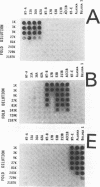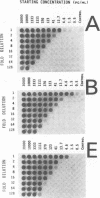Abstract
The measurement of toxins A, B, and E from Clostridium botulinum was accomplished by use of a modified sandwich enzyme-linked immunosorbent assay (ELISA) employing labeled horse antibody and either chicken antibody or biotinylated horse antibody. The complexes formed in solution phase were captured onto solid phases coated with rabbit anti-chicken immunoglobulin G (chicken antibody) or avidin (biotinylated antibody). The assay was brought to the sensitivity of the mouse bioassay (5 to 10 pg/ml, or 0.03 to 0.07 pM) by employing as labeling enzyme the factor X activator of Russell's viper venom (RVV-XA) and a sensitive coagulation-based assay amplification system known as enzyme-linked coagulation assay. Complex formation was found to be a slower reaction than binding to the capture plate, and so the assay used a preincubation step to produce the solution-phase complexes before they were bound to the solid phase. Keeping the concentrations of Russell's viper venom factor X activator antibody and capture antibody constant for diluted samples and diluting complexes into buffer without keeping labeled antibody concentrations constant were equivalent in allowing the detection of low neurotoxin concentrations. This ELISA-enzyme-linked coagulation assay procedure is a convenient alternative to the mouse bioassay, which shows complete resolution of the neurotoxins in addition to the requisite sensitivity.
Full text
PDF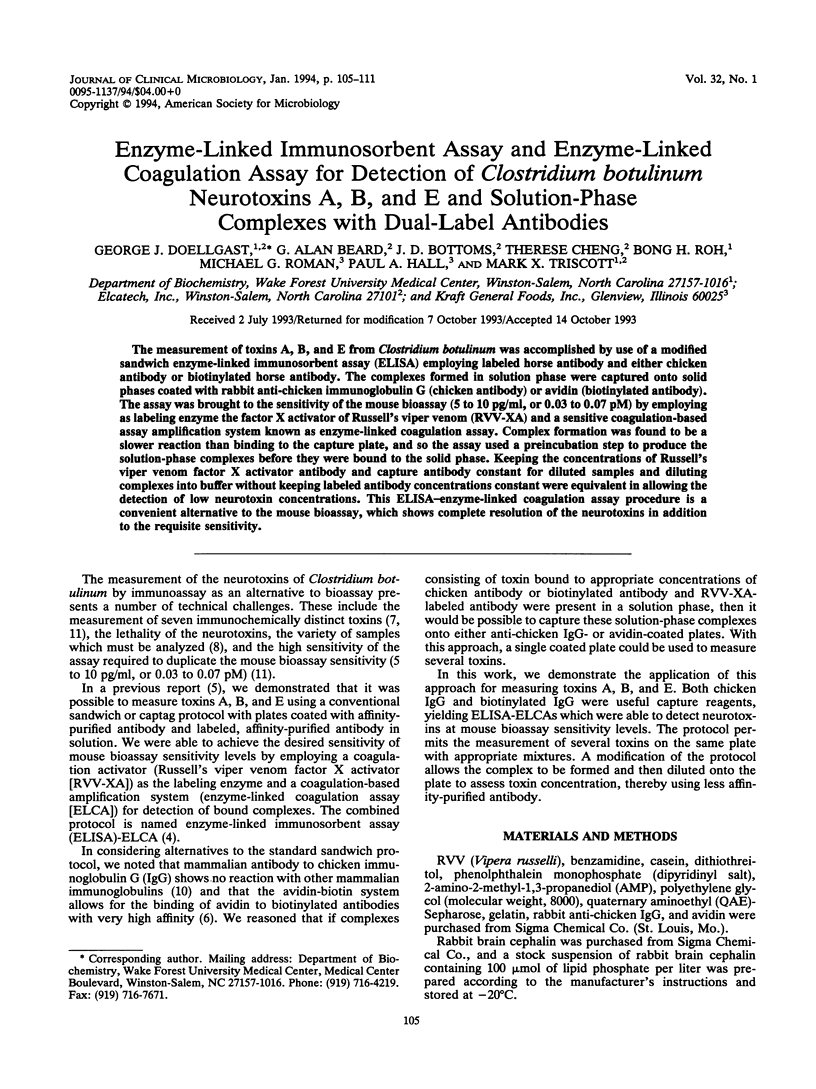
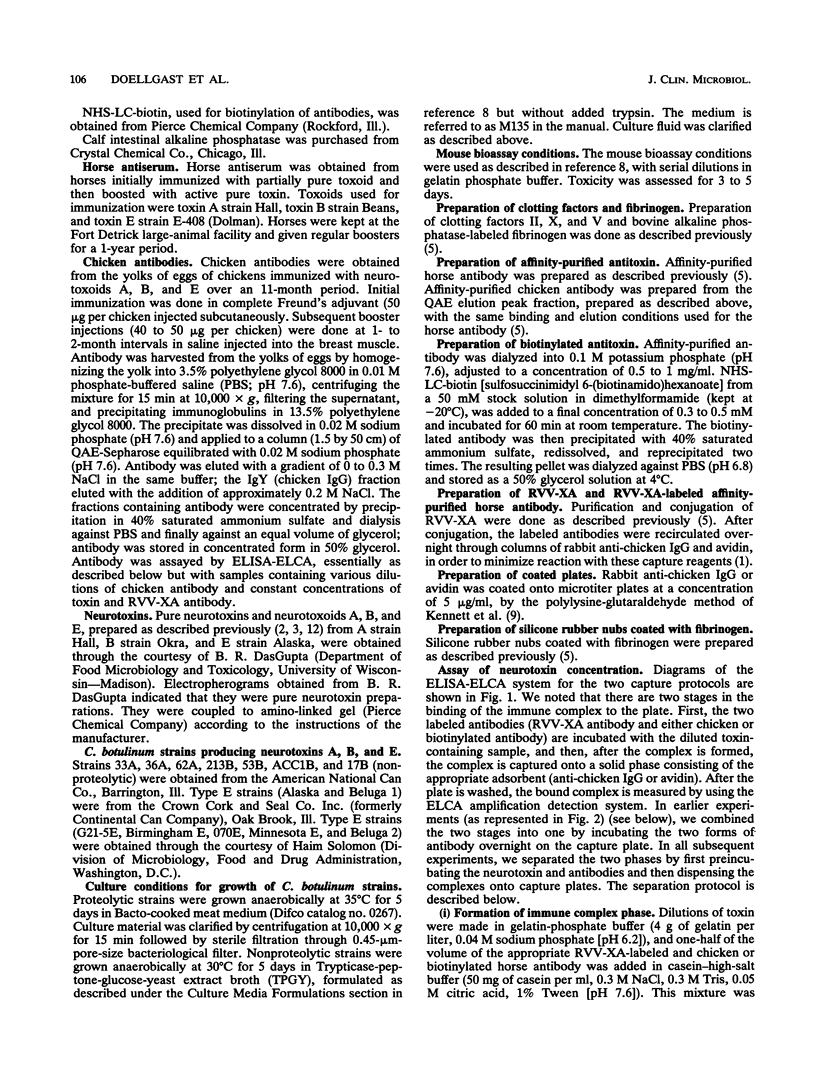
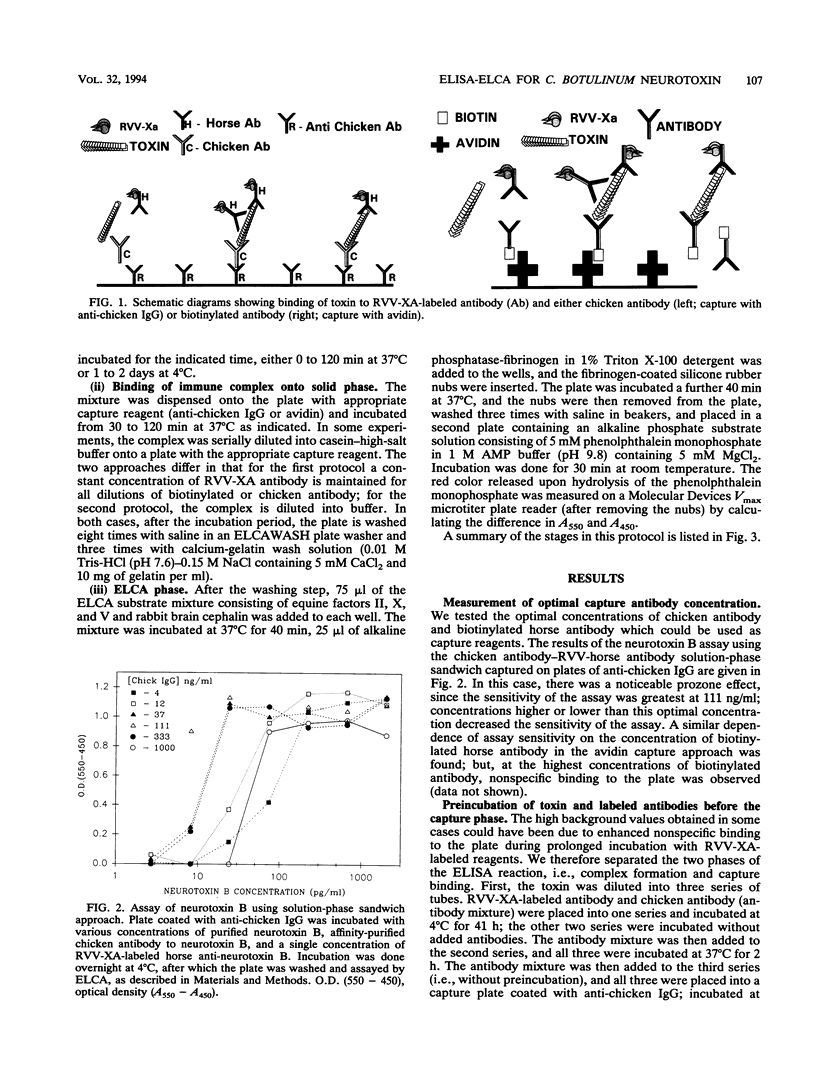
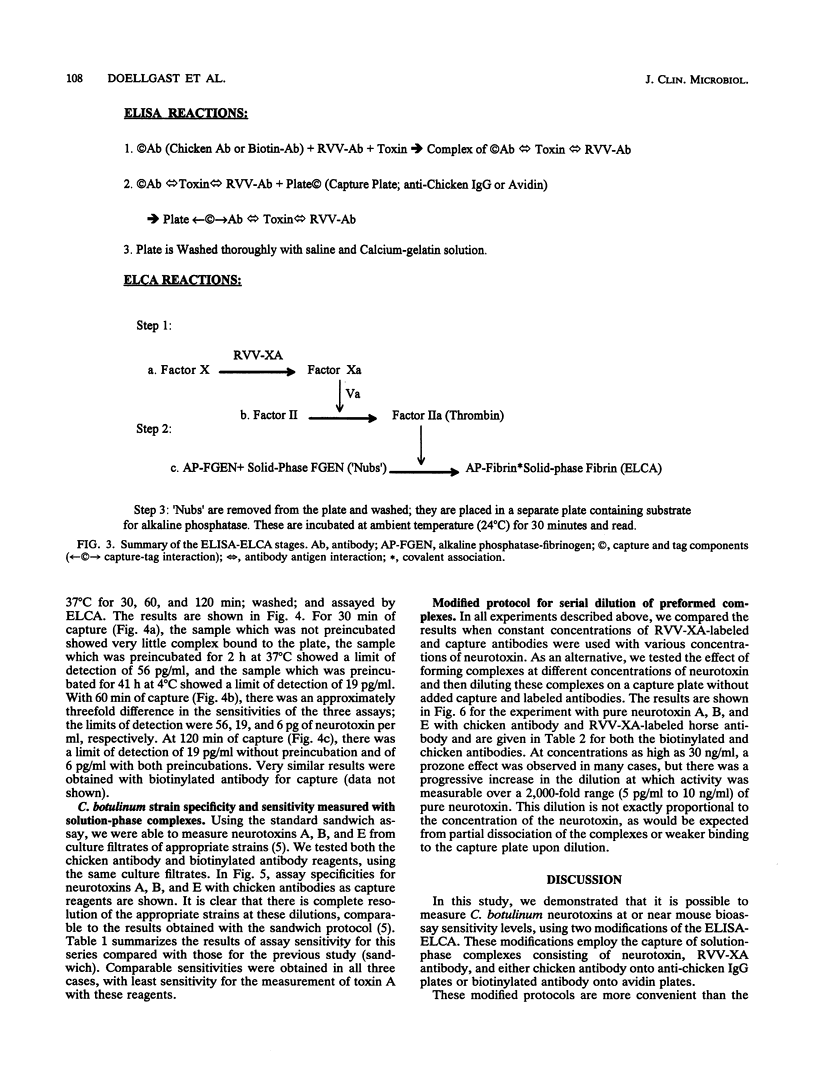
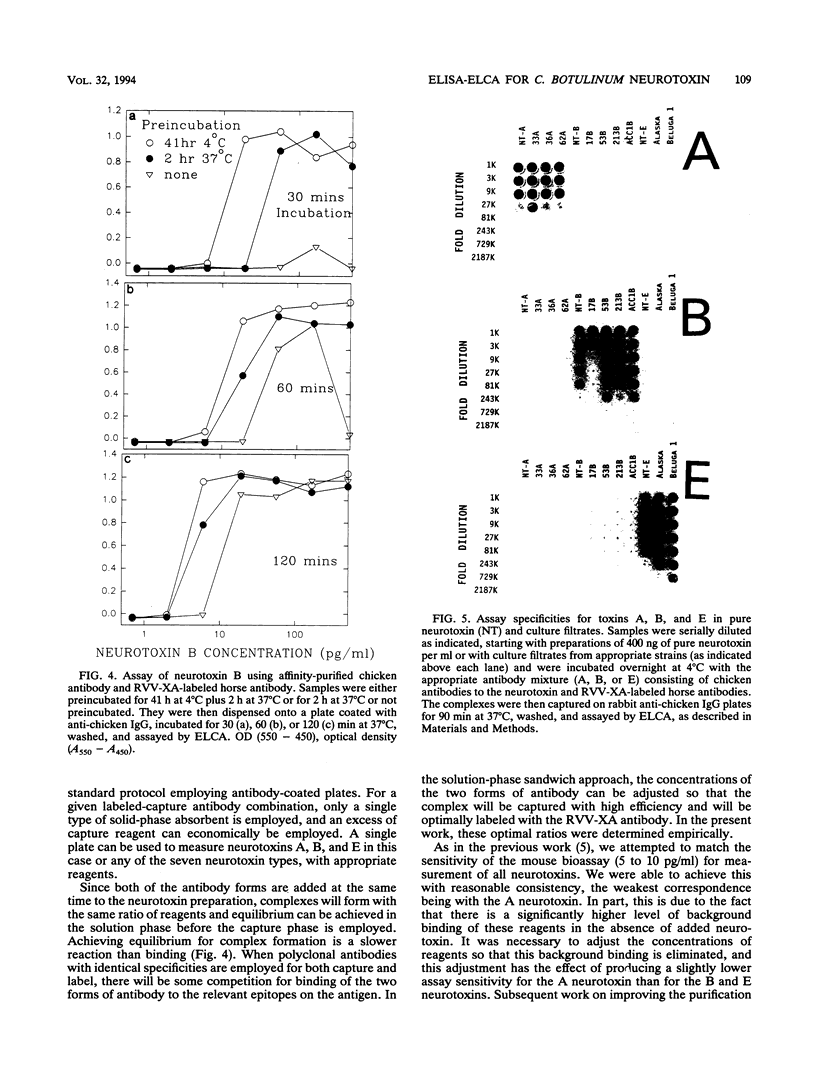
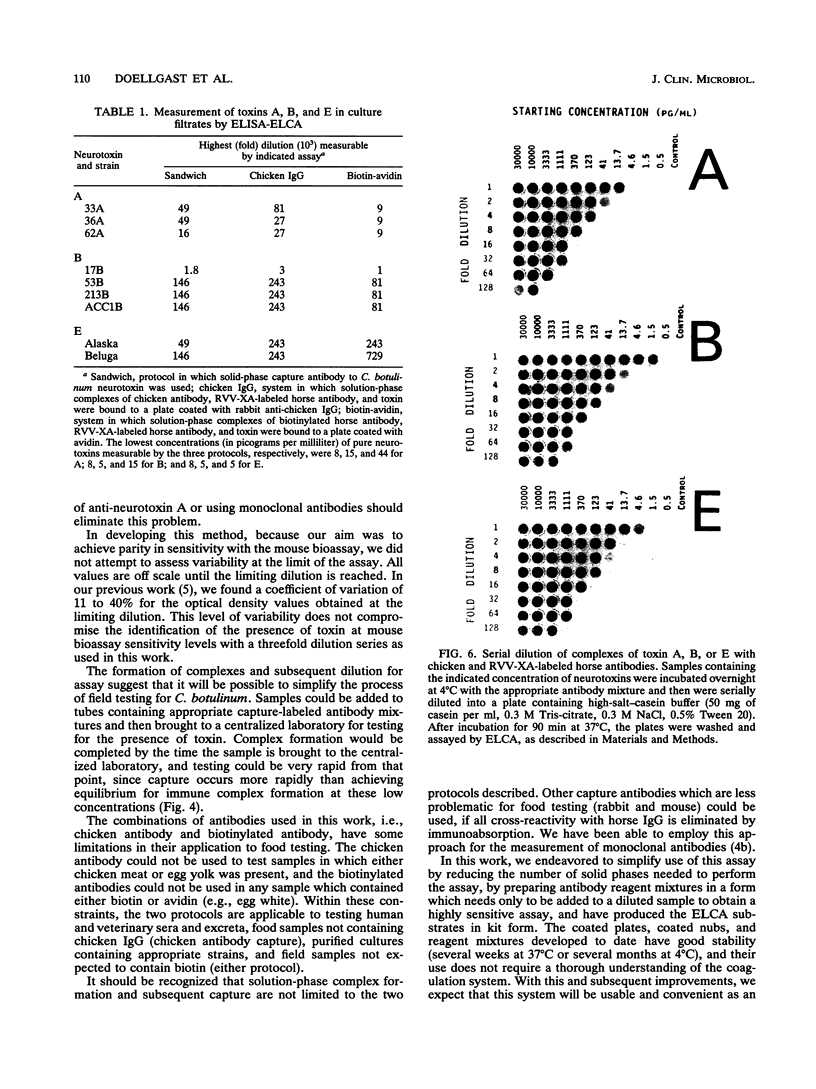
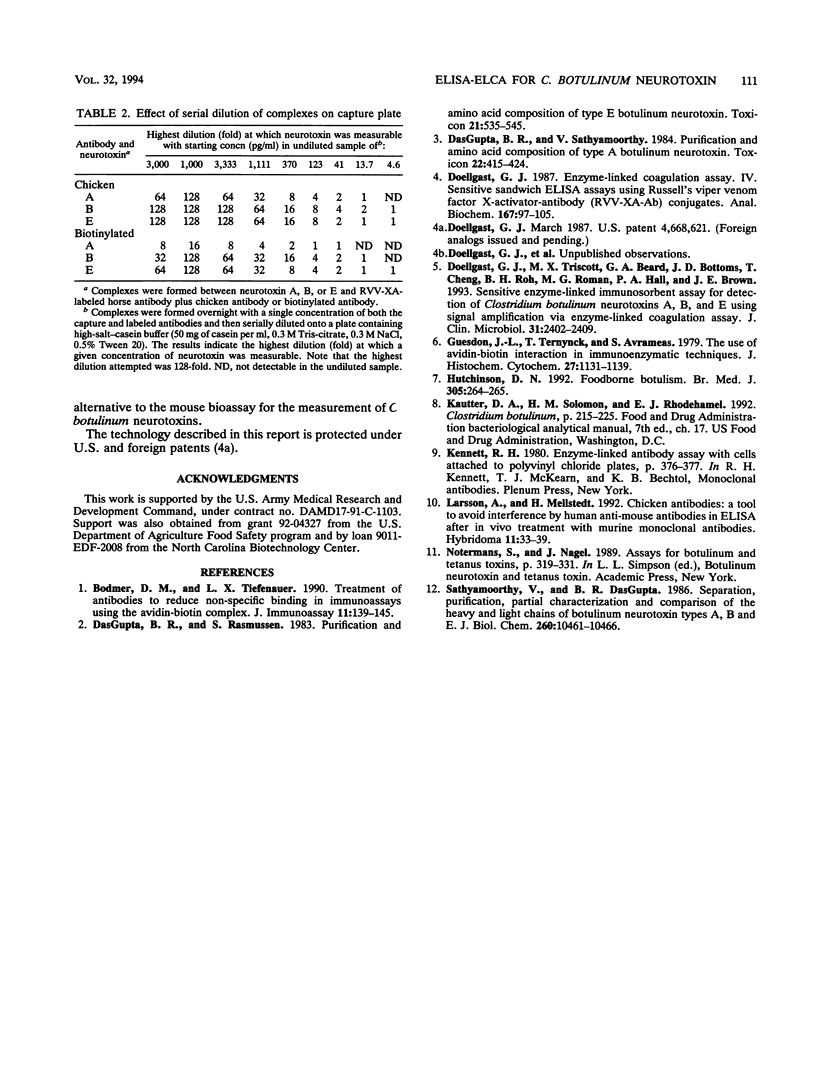
Images in this article
Selected References
These references are in PubMed. This may not be the complete list of references from this article.
- Bodmer D. M., Tiefenauer L. X. Treatment of antibodies to reduce non-specific binding in immunoassays using the avidin-biotin complex. J Immunoassay. 1990;11(2):139–145. doi: 10.1080/01971529008053265. [DOI] [PubMed] [Google Scholar]
- DasGupta B. R., Rasmussen S. Purification and amino acid composition of type E botulinum neurotoxin. Toxicon. 1983;21(4):535–545. doi: 10.1016/0041-0101(83)90131-9. [DOI] [PubMed] [Google Scholar]
- DasGupta B. R., Sathyamoorthy V. Purification and amino acid composition of type A botulinum neurotoxin. Toxicon. 1984;22(3):415–424. doi: 10.1016/0041-0101(84)90085-0. [DOI] [PubMed] [Google Scholar]
- Doellgast G. J. Enzyme-linked coagulation assay. IV. Sensitive sandwich enzyme-linked immunosorbent assays using Russell's viper venom factor X activator-antibody conjugates. Anal Biochem. 1987 Nov 15;167(1):97–105. doi: 10.1016/0003-2697(87)90137-0. [DOI] [PubMed] [Google Scholar]
- Doellgast G. J., Triscott M. X., Beard G. A., Bottoms J. D., Cheng T., Roh B. H., Roman M. G., Hall P. A., Brown J. E. Sensitive enzyme-linked immunosorbent assay for detection of Clostridium botulinum neurotoxins A, B, and E using signal amplification via enzyme-linked coagulation assay. J Clin Microbiol. 1993 Sep;31(9):2402–2409. doi: 10.1128/jcm.31.9.2402-2409.1993. [DOI] [PMC free article] [PubMed] [Google Scholar]
- Guesdon J. L., Ternynck T., Avrameas S. The use of avidin-biotin interaction in immunoenzymatic techniques. J Histochem Cytochem. 1979 Aug;27(8):1131–1139. doi: 10.1177/27.8.90074. [DOI] [PubMed] [Google Scholar]
- Hutchinson D. N. Foodborne botulism. BMJ. 1992 Aug 1;305(6848):264–265. doi: 10.1136/bmj.305.6848.264. [DOI] [PMC free article] [PubMed] [Google Scholar]
- Larsson A., Mellstedt H. Chicken antibodies: a tool to avoid interference by human anti-mouse antibodies in ELISA after in vivo treatment with murine monoclonal antibodies. Hybridoma. 1992 Feb;11(1):33–39. doi: 10.1089/hyb.1992.11.33. [DOI] [PubMed] [Google Scholar]
- Sathyamoorthy V., DasGupta B. R. Separation, purification, partial characterization and comparison of the heavy and light chains of botulinum neurotoxin types A, B, and E. J Biol Chem. 1985 Sep 5;260(19):10461–10466. [PubMed] [Google Scholar]



